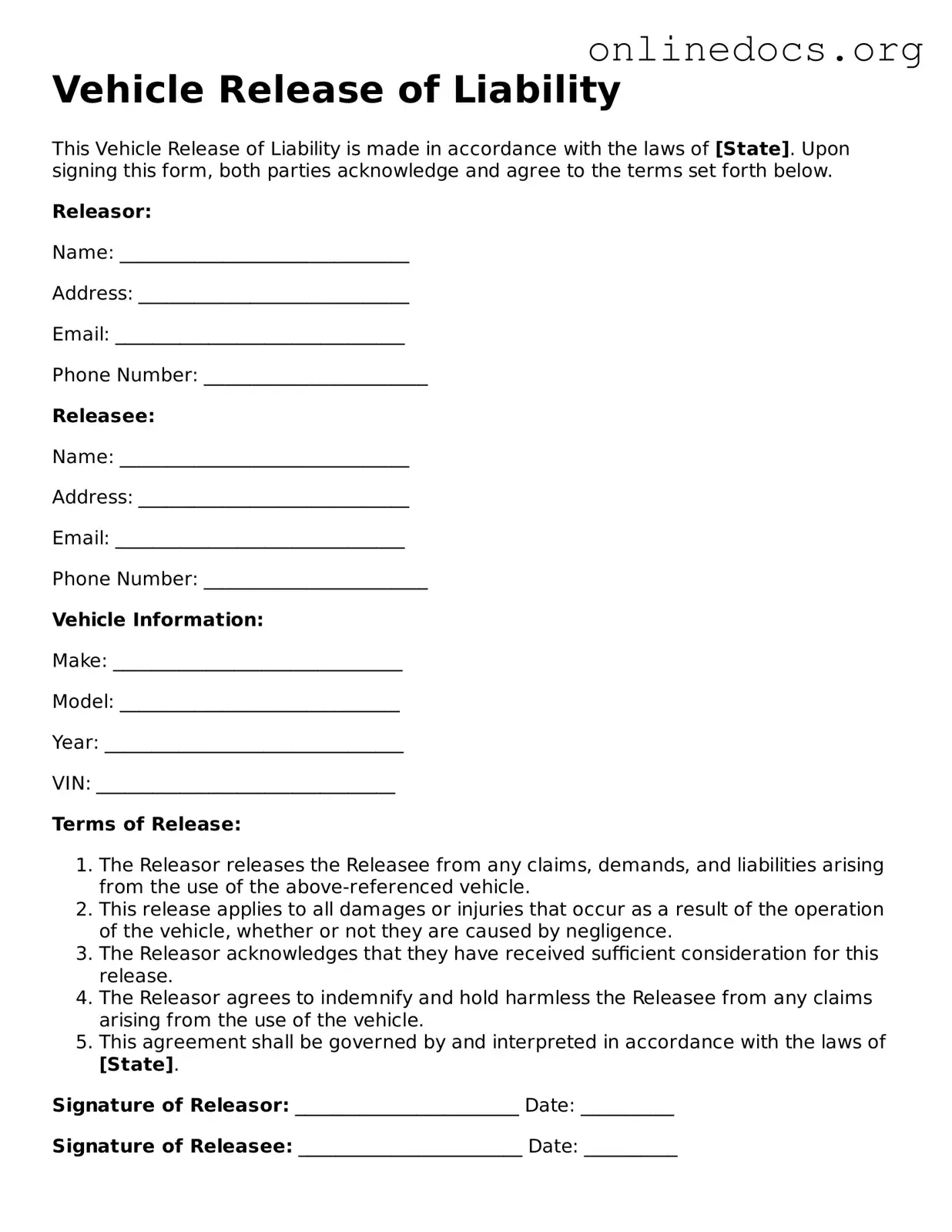Completing a Vehicle Release of Liability form is an important step in ensuring that all parties involved in a vehicle transaction are protected. However, many individuals make common mistakes that can lead to complications down the road. One significant error is failing to provide accurate information about the vehicle. This includes details such as the Vehicle Identification Number (VIN), make, model, and year. Inaccurate information can create confusion and may invalidate the form.
Another frequent mistake is neglecting to sign and date the form. A signature is not merely a formality; it signifies that the parties involved agree to the terms laid out in the document. Without a signature, the form lacks legal validity. Additionally, forgetting to date the form can lead to disputes regarding when the release took effect, complicating matters further.
People often overlook the importance of understanding the implications of the form. The Vehicle Release of Liability serves to protect the seller from future claims related to the vehicle. Failing to grasp this can lead to misunderstandings. For instance, if the buyer engages in illegal activities with the vehicle after the sale, the seller might still be held liable if the release is not properly executed.
Another mistake involves not providing the buyer with a copy of the completed form. After filling out the Vehicle Release of Liability, it is essential to give the buyer a copy for their records. This ensures that both parties have documentation of the transaction, which can be crucial if any issues arise later on.
Additionally, individuals sometimes rush through the form, leading to incomplete sections. Each part of the form is designed to capture specific information. Omitting details, such as the buyer's address or contact information, can result in complications if follow-up communication is needed. Taking the time to carefully review the form before submission is vital.
Lastly, failing to check state-specific requirements can be a significant oversight. Different states may have unique regulations or additional forms that must accompany the Vehicle Release of Liability. Being unaware of these requirements can lead to delays or even legal issues. It is crucial to be informed about the laws in your state to ensure compliance.
